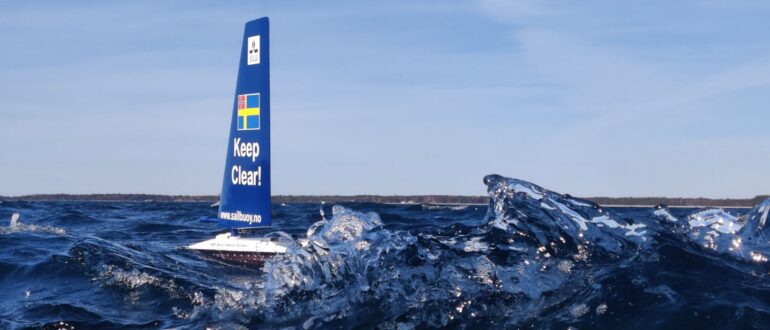TL;DR:
- AI and autonomous sail drones are revolutionizing marine research in the Baltic Sea.
- These projects, led by Jonas Hentati-Sundberg, leverage AI for seabird monitoring on Stora Karlsö Island.
- AI algorithms track birds’ behavior and interactions with their environment, providing high-resolution data.
- Sail drones equipped with various sensors monitor the ocean ecosystem, aiding real-time decision-making.
- The technology has the potential to reshape marine conservation efforts globally.
Main AI News:
In the serene landscapes of the Baltic Sea’s Stora Karlsö island, a groundbreaking approach to marine research is unfolding, driven by the convergence of artificial intelligence (AI) and cutting-edge autonomous sail drones. These innovative projects, spearheaded by Jonas Hentati-Sundberg, an ecology researcher at the Swedish University of Agricultural Sciences and Stockholm Resilience Centre, are poised to revolutionize how we monitor and manage marine ecosystems in real-time.
Drawing inspiration from the island’s flourishing colonies of breeding guillemots and razorbills, these projects aim to leverage advanced technology to gather high-resolution data and transform our understanding of the intricate relationships between seabirds and their environment. Traditionally, bird research on Stora Karlsö has relied on age-old methods, including bird ringing, manual counting, and periodic field observations. However, with the advent of new technology, the potential to comprehensively monitor every aspect of these birds’ lives ashore has become a reality.
By constructing an artificial nesting ground on a cliff of the island and outfitting it with AI-driven sensors and closed-circuit television (CCTV), the researchers have unlocked the power of big data. This data, processed through deep learning algorithms for object detection, has enabled the description of complex and previously unknown patterns in the guillemots’ interactions with their surroundings. The findings, detailed in the research paper titled “Seabird Surveillance: Combining CCTV and Artificial Intelligence for Monitoring and Research,” represent a monumental leap forward.
The system’s deep learning algorithm has been meticulously trained on annotated images of adult birds, chicks, and eggs. It provides invaluable insights, delivering time, location, size, and confidence level data for all detections, frame-by-frame, in the supplied video material. Over three complete breeding seasons from 2019 to 2021, a staggering 144 million bird detections were generated from the breeding cliff. The automated monitoring approach even excels in identifying and quantifying rare events, such as disturbances from predators, which can easily evade traditional monitoring methods.
In terms of data granularity, the system consistently surpasses what could be obtained from observational field studies, with human observers needing at least 140 weeks of full-time work to collect similar data. Notably, by deploying AI models in the field on compact devices, this system has the potential to provide real-time information on seabird population status to researchers and managers alike. This up-to-date, high-resolution data forms the foundation for real-time forecasting and decision-support systems crucial for ocean management.
Meanwhile, a parallel facet of the project involves a solar-powered sailing drone, equipped with a range of sensors designed to monitor the ocean ecosystem. Among its valuable instrumentation is an echosounder capable of measuring fish abundance and behavior down to depths of 100 meters. The drone’s sensors also capture ocean temperature, plankton blooms, cyanobacteria levels, and turbidity, relaying ecosystem updates via satellite every ten minutes. This technological marvel holds the potential to support real-time decision-making within marine ecosystems—a prospect currently constrained by computational and communication technology limitations.
One envisioned application is the dynamic regulation of marine protected areas, where fisheries adapt their activities based on the prey requirements of top predators. Ongoing experiments with onboard algorithms are set to unveil the full potential of real-time applications for this autonomous sail drone.
The team led by Jonas Hentati-Sundberg is eager to apply the lessons learned from these pioneering projects to ecosystems worldwide. Their sights are now set on Southern Australia and Arctic Canada, where they aim to implement AI methods and construct decision-support systems, empowering ground-level managers with continuously updated data.
Supported by the Arctic Research Foundation, Marcus and Marianne Wallenbergs Foundation, Formas, Vinnova, Vetenskapsrådet, and WWF Sweden, these initiatives mark a transformative leap forward in marine research, ushering in an era where AI and autonomous technology become the driving forces behind ecological conservation and management.
Conclusion:
The integration of AI and autonomous sail drones in marine ecosystem management represents a significant step forward in data-driven conservation and research. This innovative approach has the potential to not only enhance our understanding of marine ecosystems but also reshape the market for environmental monitoring technologies. Businesses and stakeholders should closely follow these developments and explore opportunities for collaboration and investment in this growing field.

